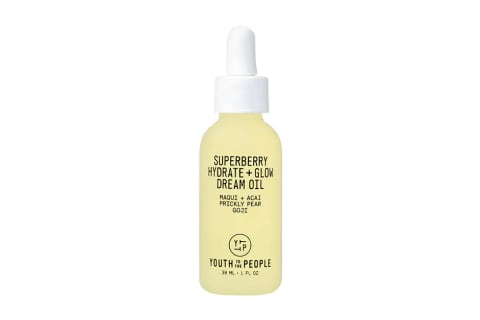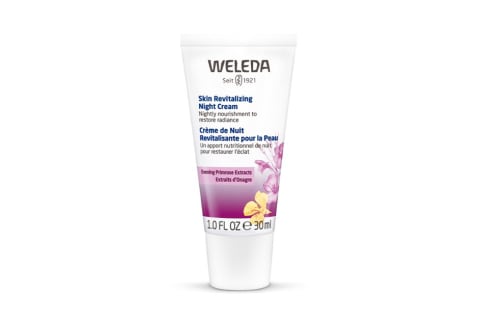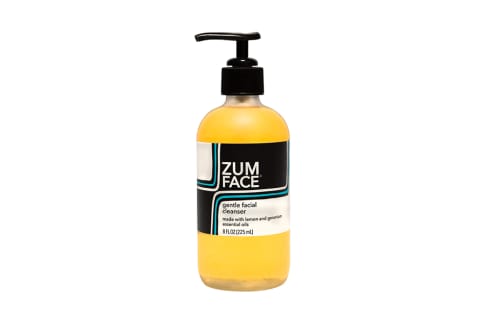And as for the skin: There are plenty of reasons to add this to your routine—just be mindful of how you use it, as it may not be the right oil for everyone (everyone reacts differently to ingredients!). You can even test your oil to make sure it’s premium enough to use, as many commercial options blend the oil with additional, lower-quality oils—learn more here. One of the reasons olive oil is so skin-loving is because of the omega content. Olive oil contains omega-6 and omega-3 fatty acids, which can help support a healthy skin barrier1 and seal in moisture for ultimate hydration. Now let’s dive into the different uses for this superstar oil. To use oil as a makeup remover, we recommend massaging the oil of your choice in circular motions, then rinsing with warm water. Feel free to stick to that as your cleansing step in your skin care routine (especially if your skin is parched dry) or proceed with a water-based cleanser for a double-cleanse. Speaking of double-cleansing. First up, why you should be washing your face with oils. “Oil cleansing can be a total game-changer for just about any skin type and condition,” explains aesthetician Britta Plug. “Although it may seem counterintuitive to wash your face with oil, it’s actually brilliant.” Here’s how it works: “An oil cleanser dissolves excess oils on your skin—without any of the surfactants, harsh ingredients, or necessary preservatives in foaming cleansers. This means that your face gets a super-deep clean, without any ‘stripping,’ or disruption of the skin’s natural microbiome,” Plug said. As for double cleansing, it is simply the process of washing your face first with an oil cleanser, then a water-based cleanser. Esthetician Hannah Brady, who works with Credo, adds that “beginning with an oil cleanse on dry skin will help remove the day and also soften the drying effects of a gel or foam cleanser.” Essentially, starting with olive oil will not only help you get a deeper clean, but it can mitigate any stripping effects of a water-based cleanser that you might follow it with. You can also simply stick with just the oil cleanse (if you have dry skin), but those with acne or combination skin will prefer to follow it up with a standard cleanser. You can tend to your skin barrier in a variety of ways—from balancing your microbiome to soothing irritation—but one of the most meaningful ways to help it is to seal in moisture. Olive oil has occlusive properties, which means that it acts as a sealant, trapping in water and blocking external aggressors. When used on top of damp skin or over a water-based product, it “moisturizes” skin by helping keep the hydration in2. (Olive oil doesn’t have moisturizing qualities intrinsically, as it contains no water, but it does help the moisturizing process nonetheless.) Here’s a quick how-to: “Use your finger pads (not nails) to apply medium-firm pressure to your scalp, in a circular motion,” says board-certified dermatologist Raechele Cochran Gathers, M.D., who specializes in hair care and founded MDHairMixtress. “They can be done daily or weekly for about five minutes.” After, you’ll likely want to rinse it out, as it can be heavy and weigh down your roots or cause buildup—but feel free to let it sit for a while, even overnight, so your skin can really drink up the antioxidants and nutrients. However, be mindful if you have dandruff. There are many claims that it can help with dandruff by moisturizing flaky, scaly patches, but most dermatologists refute this. According to board-certified dermatologist Whitney Bowe, M.D., “Dandruff is caused by a yeast on our scalp, and if you use olive oil, you are feeding that yeast, which might make dandruff worse.” Essential oil expert, author, and teacher Amy Galper previously told mbg that they can be any sort of lipid-rich extract that can be expelled from a seed, nut, or fruit. In other words, olive oil makes for a great carrier oil, especially for the body.
Superberry Hydrate + Glow Dream Oil
Skin Revitalizing Night Cream
Gentle Facial Cleanser However, some may find it to be too thick as a leave-on face product, as it is comedogenic. When something is comedogenic, it can cause pore blockage, leading to sebum plugs, blackheads, and pimples. A comedogenic formula or ingredient is usually thick and occlusive—read: olive oil—so it sits on the skin trapping in oil, bacteria, and causing inflammation, which will lead to irritation and eventually a breakout. Since you rinse off a makeup remover or oil cleanser, using it this way tends not to be much of concern; also when skin care brands formulate olive oil into creams or the like, it’s usually buffered with less comedogenic options, making it less of an issue. If you’re looking for a pure oil to use on your face, there are more sensorially and cosmetically appealing options that tend to be better for oil-prone folk, like grapeseed, pumpkin seed, jojoba, or argan oils.






